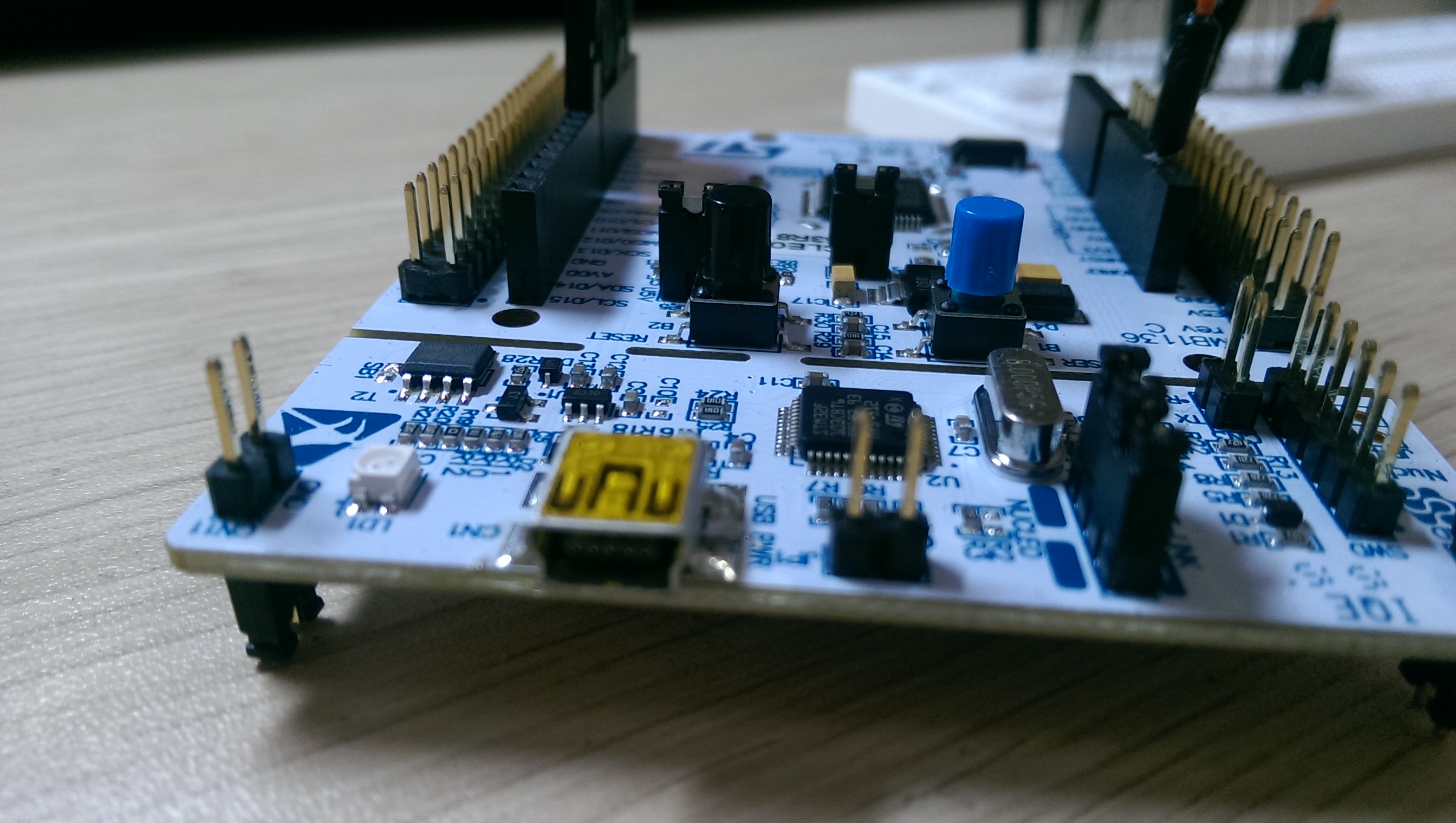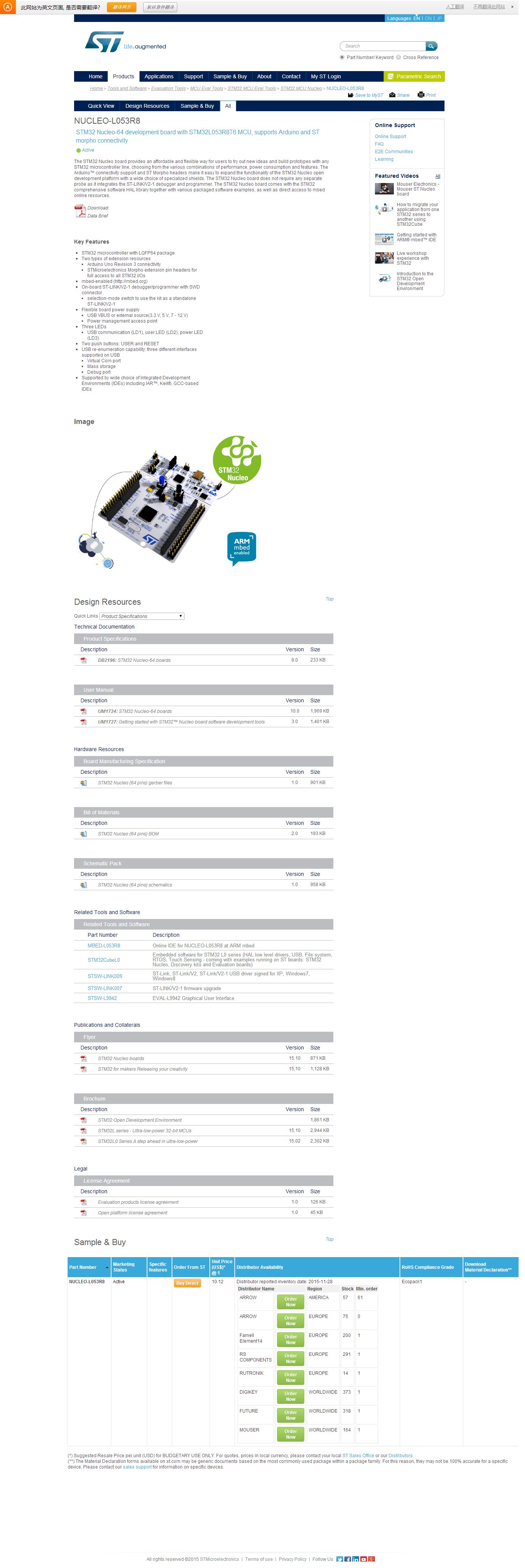我怕一楼不够,再占一层楼,表介意。
利用官方的例程,做一个流水灯,没用什么移位的原理,就简单的GPIO的配置+延时。
/**
******************************************************************************
* @file GPIO/GPIO_IOToggle/Src/main.c
* @author MCD Application Team
* @version V1.3.0
* @date 09-September-2015
* @brief This example describes how to configure and use GPIOs through
* the STM32L0xx HAL API.
******************************************************************************
* @attention
*
* © COPYRIGHT(c) 2015 STMicroelectronics
*
* Redistribution and use in source and binary forms, with or without modification,
* are permitted provided that the following conditions are met:
* 1. Redistributions of source code must retain the above copyright notice,
* this list of conditions and the following disclaimer.
* 2. Redistributions in binary form must reproduce the above copyright notice,
* this list of conditions and the following disclaimer in the documentation
* and/or other materials provided with the distribution.
* 3. Neither the name of STMicroelectronics nor the names of its contributors
* may be used to endorse or promote products derived from this software
* without specific prior written permission.
*
* THIS SOFTWARE IS PROVIDED BY THE COPYRIGHT HOLDERS AND CONTRIBUTORS "AS IS"
* AND ANY EXPRESS OR IMPLIED WARRANTIES, INCLUDING, BUT NOT LIMITED TO, THE
* IMPLIED WARRANTIES OF MERCHANTABILITY AND FITNESS FOR A PARTICULAR PURPOSE ARE
* DISCLAIMED. IN NO EVENT SHALL THE COPYRIGHT HOLDER OR CONTRIBUTORS BE LIABLE
* FOR ANY DIRECT, INDIRECT, INCIDENTAL, SPECIAL, EXEMPLARY, OR CONSEQUENTIAL
* DAMAGES (INCLUDING, BUT NOT LIMITED TO, PROCUREMENT OF SUBSTITUTE GOODS OR
* SERVICES; LOSS OF USE, DATA, OR PROFITS; OR BUSINESS INTERRUPTION) HOWEVER
* CAUSED AND ON ANY THEORY OF LIABILITY, WHETHER IN CONTRACT, STRICT LIABILITY,
* OR TORT (INCLUDING NEGLIGENCE OR OTHERWISE) ARISING IN ANY WAY OUT OF THE USE
* OF THIS SOFTWARE, EVEN IF ADVISED OF THE POSSIBILITY OF SUCH DAMAGE.
*
******************************************************************************
*/
/* Includes ------------------------------------------------------------------*/
#include "main.h"
/** @addtogroup STM32L0xx_HAL_Examples
* @{
*/
/** @addtogroup GPIO_IOToggle
* @{
*/
/* Private typedef -----------------------------------------------------------*/
/* Private define ------------------------------------------------------------*/
/* Private macro -------------------------------------------------------------*/
/* Private variables ---------------------------------------------------------*/
static GPIO_InitTypeDef GPIO_InitStruct;
/* Private function prototypes -----------------------------------------------*/
static void SystemClock_Config(void);
/* Private functions ---------------------------------------------------------*/
/**
* @brief Main program
* @param None
* @retval None
*/
int main(void)
{
/* This sample code shows how to use STM32L0xx GPIO HAL API to toggle PA5 Pin
(connected to LED2, on STM32L0xx_Nucleo board) in an infinite loop.
To proceed, 3 steps are required: */
/* STM32L0xx HAL library initialization:
- Configure the Flash prefetch, Flash preread and Buffer caches
- In the default implementation , SysTick timer is configured as main source
of time base. It is used to generate interrupts at 1ms basis.
- Low Level Initialization
*/
HAL_Init();
/* Configure the system clock */
SystemClock_Config();
/* -1- Enable GPIOA Clock (to be able to program the configuration registers) */
__HAL_RCC_GPIOA_CLK_ENABLE();
__HAL_RCC_GPIOB_CLK_ENABLE();
/* -2- Configure PA.5 IO in output push-pull mode to
drive external LEDs */
GPIO_InitStruct.Pin = (GPIO_PIN_5|GPIO_PIN_10|GPIO_PIN_8|GPIO_PIN_9);
GPIO_InitStruct.Mode = GPIO_MODE_OUTPUT_PP;
GPIO_InitStruct.Pull = GPIO_PULLUP;
GPIO_InitStruct.Speed = GPIO_SPEED_FREQ_HIGH ;
HAL_GPIO_Init(GPIOA, &GPIO_InitStruct);
GPIO_InitStruct.Pin = (GPIO_PIN_5);
GPIO_InitStruct.Mode = GPIO_MODE_OUTPUT_PP;
GPIO_InitStruct.Pull = GPIO_PULLUP;
GPIO_InitStruct.Speed = GPIO_SPEED_FREQ_HIGH ;
HAL_GPIO_Init(GPIOB, &GPIO_InitStruct);
/* -3- Toggle PA.5 IOs in an infinite loop */
while (1)
{
HAL_Delay(200);
HAL_GPIO_TogglePin(GPIOA, GPIO_PIN_5);
/* Insert delay 100 ms */
HAL_Delay(200);
HAL_GPIO_TogglePin(GPIOA, GPIO_PIN_9);
HAL_Delay(200);
HAL_GPIO_TogglePin(GPIOA, GPIO_PIN_8);
HAL_Delay(200);
HAL_GPIO_TogglePin(GPIOB, GPIO_PIN_5);
HAL_Delay(200);
HAL_GPIO_TogglePin(GPIOA, GPIO_PIN_10);
HAL_Delay(200);
}
}
/**
* @brief System Clock Configuration
* The system Clock is configured as follow :
* System Clock source = MSI
* SYSCLK(Hz) = 2000000
* HCLK(Hz) = 2000000
* AHB Prescaler = 1
* APB1 Prescaler = 1
* APB2 Prescaler = 1
* Flash Latency(WS) = 0
* Main regulator output voltage = Scale3 mode
* @param None
* @retval None
*/
static void SystemClock_Config(void)
{
RCC_ClkInitTypeDef RCC_ClkInitStruct;
RCC_OscInitTypeDef RCC_OscInitStruct;
/* Enable Power Control clock */
__HAL_RCC_PWR_CLK_ENABLE();
/* The voltage scaling allows optimizing the power consumption when the device is
clocked below the maximum system frequency, to update the voltage scaling value
regarding system frequency refer to product datasheet. */
__HAL_PWR_VOLTAGESCALING_CONFIG(PWR_REGULATOR_VOLTAGE_SCALE3);
/* Enable MSI Oscillator */
RCC_OscInitStruct.OscillatorType = RCC_OSCILLATORTYPE_MSI;
RCC_OscInitStruct.MSIState = RCC_MSI_ON;
RCC_OscInitStruct.MSIClockRange = RCC_MSIRANGE_5;
RCC_OscInitStruct.MSICalibrationValue=0x00;
RCC_OscInitStruct.PLL.PLLState = RCC_PLL_NONE;
HAL_RCC_OscConfig(&RCC_OscInitStruct);
/* Select MSI as system clock source and configure the HCLK, PCLK1 and PCLK2
clocks dividers */
RCC_ClkInitStruct.ClockType = (RCC_CLOCKTYPE_SYSCLK | RCC_CLOCKTYPE_HCLK | RCC_CLOCKTYPE_PCLK1 | RCC_CLOCKTYPE_PCLK2);
RCC_ClkInitStruct.SYSCLKSource = RCC_SYSCLKSOURCE_MSI;
RCC_ClkInitStruct.AHBCLKDivider = RCC_SYSCLK_DIV1;
RCC_ClkInitStruct.APB1CLKDivider = RCC_HCLK_DIV1;
RCC_ClkInitStruct.APB2CLKDivider = RCC_HCLK_DIV1;
HAL_RCC_ClockConfig(&RCC_ClkInitStruct, FLASH_LATENCY_0);
}
#ifdef USE_FULL_ASSERT
/**
* @brief Reports the name of the source file and the source line number
* where the assert_param error has occurred.
* @param file: pointer to the source file name
* @param line: assert_param error line source number
* @retval None
*/
void assert_failed(uint8_t* file, uint32_t line)
{
/* User can add his own implementation to report the file name and line number,
ex: printf("Wrong parameters value: file %s on line %d\r\n", file, line) */
/* Infinite loop */
while (1)
{
}
}
#endif
/**
* @}
*/
/**
* @}
*/
/************************ (C) COPYRIGHT STMicroelectronics *****END OF FILE****/
http://player.youku.com/player.php/sid/XMTM5OTA1MzgxNg==/v.swf
手机拍的视频,率先分享到这里,过两周要考试了,是一本天书,只能乖乖的复习去了,拜了个拜!!以后继续分享!!
多谢EEPW璐璐和邮寄的小哥!










 我要赚赏金
我要赚赏金

